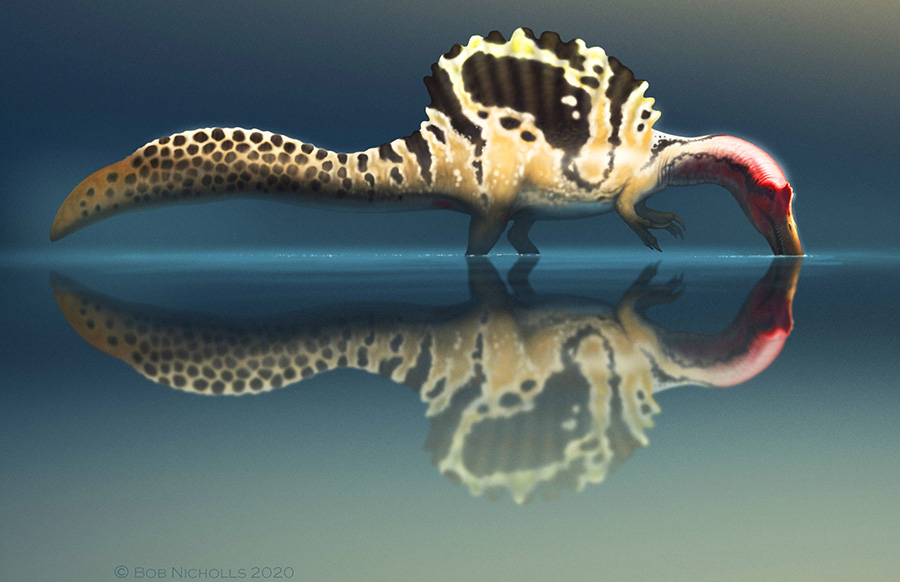Spinosaurus Wasn’t Aquatic Pursuit Predator, New Research Shows

The giant dinosaur Spinosaurus acted like modern herons or storks, taking fish and other aquatic prey from the edges of water or in shallow water, but also foraging for terrestrial prey and scavenging on occasion, according to new research by paleontologists from Queen Mary University of London, the University of Maryland and the National Museum of Natural History in Washington.
Spinosaurus is a giant theropod dinosaur that lived in what is now North Africa, about 95 million years ago (Cretaceous period).
Since its discovery in 1915, the biology and behavior of this ancient creature has puzzled paleontologists worldwide.
It was recently argued that Spinosaurus was largely a pursuit predator of aquatic prey, using its large tail to swim and actively pursue fish in the water.
The new study challenges this view, suggesting that whilst it likely fed from the water, and may have swum, it wasn’t well adapted to the life of an aquatic pursuit predator.
“The biology and ecology of Spinosaurus has been troubling paleontologists for decades,” said lead author Dr. David Hone, a paleontologist at Queen Mary University of London.
“Some recent studies have suggested that it was actively chasing fish in water but while they could swim, they would not have been fast or efficient enough to do this effectively.”
“Our findings suggest that the wading idea is much better supported, even if it is slightly less exciting.”
Dr. Hone and his colleague, Dr. Tom Holtz, compared the features of Spinosaurus with the skulls and skeletons of other dinosaurs and various living and extinct reptiles that lived on land, in the water or did both.
They found that whilst there were several pieces of evidence that contradicted the aquatic pursuit predator concept, none contradicted the wading heron-like model, and various lines of evidence actively supported it.
“Spinosaurus was a bizarre animal even by dinosaur standards, and unlike anything alive today, so trying to understand its ecology will always be difficult,” Dr. Holtz said.
“We sought to use what evidence we have to best approximate its way of life. And what we found did not match the attributes one would expect in an aquatic pursuit predator in the manner of an otter, sea lion, or short-necked plesiosaur.”
Spinosaurus had fewer tail muscles than a crocodile, and due to its size would have a lot more drag in the water.
“Crocodiles are excellent in water compared to land animals, but are not that specialized for aquatic life and are not able to actively chase after fish,” Dr. Hone said.
“If Spinosaurus had fewer muscles on the tail, less efficiency and more drag then it’s h ard to see how these dinosaurs could be chasing fish in a way that crocodiles cannot.”
“Whilst our study provides us with a clearer picture of the ecology and behavior of Spinosaurus, there are still many outstanding questions and details to examine for future study and we must continue to review our ideas as we accumulate further evidence and data on these unique dinosaurs. This won’t be the last word on the biology of these amazing animals.”
The team’s paper was published online in the journal Palaeontologia Electronica.
_____
David W.E. Hone & Thomas R. Holtz, Jr. 2021. Evaluating the ecology of Spinosaurus: Shoreline generalist or aquatic pursuit specialist? Palaeontologia Electronica 24 (1): a03; doi: 10.26879/1110
Source: www.sci-news.com/








